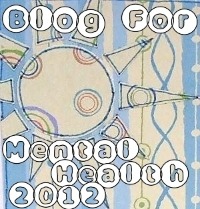The next ‘how’ skill in core mindfulness is being doing things ‘one mindfully’ and this skill is described by some as the most important within this module. It is noted that this skill will take a lot of practice to learn, so please don’t get downhearted if you can’t grasp it straight away.
In short, mindfulness is about being in the moment, without distractions. Being one-mindful is doing one thing at a time, focusing our attention on what we are doing and being in the present. *Note: Try to take a non-judgmental stance towards yourself if you cannot achieve this immediately.
An interesting little fact is that these skills are drawn from Eastern and Western Meditation Practices, so even meditation not related to DBT will help.
Tips to be one-mindful;
- Do one thing at a time (this includes your thoughts – think about the task in hand rather than other things)
- When you are worrying, worry. Don’t let yourself worry when you are trying to do other things one-mindfully
- If you find yourself distracted, observe, then return to being one-mindful
- Being one-mindful is sustaining your attention in the present moment and will help to improve your concentration
- Most people do not act one-mindfully. We are taught to believe that if we ‘multi-task’ we accomplish more.

Practice exercises
Courtesy of DBT Self Help;
For this exercise, you need an orange or a tangerine or a grapefruit. (If you don’t like any of these, use some fruit with a peel.)
Put the orange on a dish in front of you. Look at the orange. Think about where it came from. The orange tree where it grew. The other oranges in the orange grove. The sun shining down. The warm rain. Think about this orange being picked from the tree.
Observe its color. Its shape. Are there marks on its skin? Is it exactly round? Is it all orange in color? What else do you see about it?
Now pull off the top of the orange. Smell the orange smell. Notice the mist that rises from the orange. Pick the orange up and smell it. Pull a strip of peel off the orange. Pull the white off the peel. Rub the peel. Feel its oiliness. Smell it. Does it have a bitter smell?
Now peel a section of the orange big enough to eat. Is it easy or hard to peel? Pick up a segment of orange. Look at it. Smell it. Feel it. Does it have seeds? How many? What does it smell like? Is your mouth watering? Now bite into it. Taste the juice. Does it drip on your fingers or your chin? Feel the drips? Taste the sweetness of the juice. After you swallow the orange, how do you feel?
Now peel and eat the rest of the orange. Don’t hurry. Enjoy and savor the orange. Eat slowly. Is there juice on the plate or the table? Let it linger, and smell the aroma of the juice. When you are done, wipe up the juice, and put your napkin on your plate. Is your napkin orange?
You have just one-mindfully eaten an orange. For those few minutes, your whole attention was on eating that orange, and on fully experiencing everything there was to experience about eating that orange.
Was it more enjoyable than gulping down an orange or some other piece of food without thinking about it, gone before you knew it? Does it feel good to feel totally present for a few minutes?
******

One Minute of Mindfulness Courtesy of The Guided Meditation Site
This is an easy mindfulness exercise, and one that you can do anytime throughout the day. Take a moment right now to try this. Check your watch and note the time. For the next 60 seconds your task is to focus all your attention on your breathing. It’s just for one minute, but it can seem like an eternity. Leave your eyes open and breathe normally. Be ready to catch your mind from wandering off (because it will) and return your attention to your breath whenever it does so.
This mindfulness exercise is far more powerful than most people give it credit for. It takes some people many years of practice before they are able to complete a single minute of alert, clear attention.
Keep in mind that this mindfulness exercise is not a contest or a personal challenge. You can’t fail at this exercise, you can only experience it.
Use this exercise many times throughout the day to restore your mind to the present moment and to restore your mind to clarity and peace.
Over time, you can gradually extend the duration of this exercise into longer and longer periods. This exercise is actually the foundation of a correct mindfulness meditation technique.
******
Conscious Observation
Pick up an object that you have lying around. Any mundane everyday object will do…a coffee cup or a pen for example. Hold it in your hands and allow your attention to be fully absorbed by the object. Observe it. Don’t assess it, or think about it, or study it intellectually. Just observe it for what it is.

You’ll feel a sense of heightened “nowness” during this exercise. Conscious observation can really give you a feeling of “being awake”. Notice how your mind quickly releases thoughts of past or future, and how different it feels to be in the moment. Conscious observation is a form of meditation. It’s subtle, but powerful. Try it…by practicing mindfulness in this way you’ll really start to sense what mindfulness is all about.
******

The Ten Second Count
This is more of an exercise in practicing concentration than it is in mindfulness, and it is a simple variation on exercise 1. In this exercise, rather than focusing on your breath, you just close your eyes and focus your attention on slowly counting to ten. If your concentration wanders of, start back at number one!For most people, it goes something like this…
“One…two…three…do I have to buy milk today or did John say he’d do it? Oh, whoops, I’m thinking.”
“One…two…three…four…this isn’t so hard after all… Oh no….that’s a thought! Start again.”
“One…two…three… now I’ve got it. I’m really concentrating now…”
******

Mindfulness Cues
In this exercise you focus your attention on your breathing whenever a specific environmental cue occurs. For example, whenever you hear the phone ring, you promptly bring your attention into the present moment and stay focused on your breath.
Simply choose a cue that works for you. Perhaps you will choose to become mindful every time you look in the mirror. Perhaps it will be every time your hands touch each other. Perhaps it will be every time you hear a bird.
Mindfulness cues are an excellent mindfulness technique that are designed to snap you out of the unconscious “autopilot” state of mind, and bring you back into the present moment.
******
A last little note: It is important to realise there is a difference between being mindful, and concentrating. Mindfulness is one step further than concentrating – where concentrating is focusing your mind on something, mindfulness is a state of awareness, a presence of mind.

References
















I’ve nominated you for an award!
http://carlarenee45.wordpress.com/2012/09/19/the-lovely-blog-award-for-me/
[…] much covered all the parts of the Core Mindfulness Module, in Part one, Part two, Part three, Part four & finally Part five. Core mindfulness, I am beginning to realise, is at the core of DBT and […]
[…] list goes on. Do what ever you need to do to distract you from the distress you are feeling. Be one-mindful in whatever you […]
[…] is the same still as the Core Mindfulness skill One-Mindfully. Here are some exercises from dbtselfhelp – I have gone over them already but I thought it […]
[…] https://mybpdstory.wordpress.com/2012/09/19/core-mindfulness-part-four-how-skill-one-mindfully/ […]